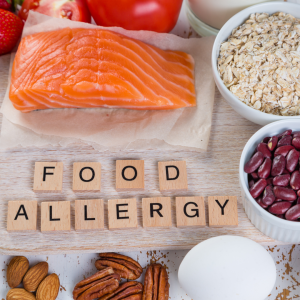Snack Safety – Avoid Allergy Risks
 Approximately two children in every classroom have a food allergy according to the Centers for Disease Control and Prevention.
Approximately two children in every classroom have a food allergy according to the Centers for Disease Control and Prevention.
A food allergy occurs when the body has an immune response to specific foods. The most common food allergies include milk, eggs, fish, shellfish, wheat, soy, peanuts and tree nuts. Reactions to food allergies can range from mild to severe to life-threatening.
“The worst case scenario for food allergies is a life-threatening reaction,” said Virginia Dolan, MD, with Memorial Care on Koke Mill. “For persons with food allergies, the goal is to prevent a reaction from happening or to be prepared to provide intervention.”
While there is no cure for food allergies, you can help prevent allergic reactions by being aware of the allergies of classmates, friends and family members.
“While schools have plans in place to help and provide assistance in the event of an allergic reaction, parents can be proactive to reduce the risk for classmates by inquiring with the school about allergy and snack safety guidelines,” said Dolan.
Check nutrition labels and ingredients and avoid homemade products to ensure safety for at-risk children.
Concerned about food allergies? Speak with your primary care provider or find a doctor:
Related Articles
Experts Share Risk Factors for Foodborne Illness and Discuss Why Food Safety Matters
Four Ways to Manage Spring Asthma and Allergy Triggers
Pediatric Allergies are Nothing to Sneeze At